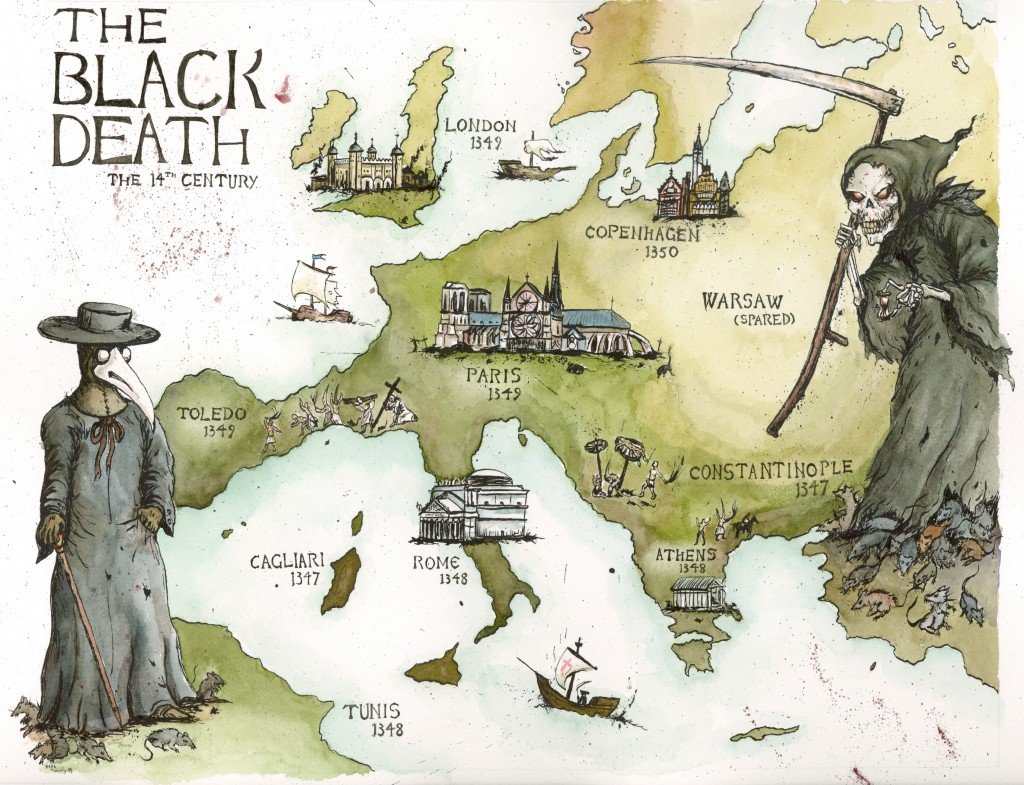
Quick search
CTRL+K
Quick search
CTRL+K
CTRL+K
CTRL+K

The Black Death, one of history’s deadliest pandemics, swept through Europe between 1347 and 1351 and killed between 25 and 50 million people—nearly a third of the continent’s population. Though the suffering was immense, the long-term consequences were even more transformative. The plague didn’t just decimate populations—it changed the very foundations of European society, economy, religion, and thought in ways that would reshape the course of history.
The disease likely originated in Central Asia and traveled along the Silk Road to Crimea, where it was brought to Europe by Genoese merchants fleeing the besieged city of Kaffa. Their ships carried the deadly bacterium Yersinia pestis, hosted by fleas on black rats. When these vessels docked in Messina, Sicily in 1347, the plague began its relentless march across the continent. Within just a few years, cities like Florence, London, and Paris lost half or more of their populations. Entire villages vanished. Medical understanding was too primitive to explain or stop the contagion, so people turned to divine explanations. Some sought forgiveness through public acts of penance, while others targeted marginalized groups, especially Jews, blaming them for poisoning wells—a tragic wave of violence that claimed thousands of innocent lives.

As Europe’s population collapsed, so too did its traditional social order. The sharp decline in laborers gave surviving workers rare bargaining power. Peasants demanded higher wages and more rights, often walking away from feudal estates that could no longer control them. Landowners were forced to abandon or lease lands, and urban centers began to grow with the arrival of a freer, mobile labor class. The rigid structure of feudalism—where lords held power over bound serfs—began to crumble. This shift toward a wage-based economy sowed the seeds for capitalism and helped birth the European middle class.
Religious faith, once an unshakable pillar of medieval life, was deeply shaken. The Church had no answers for the plague, and many clergy fled their posts. Some religious movements turned to radical penance, while others rejected the Church’s authority altogether. At the same time, a growing interest in natural explanations for disease laid the foundation for later scientific thinking. The disillusionment with old systems opened minds to new ideas—not only in medicine but also in philosophy, politics, and art.
Cultural and psychological scars from the Black Death ran deep. Death became a constant motif in European art and literature, reflected in macabre imagery like the “Danse Macabre” and a fascination with mortality that persisted for centuries. The trauma also fostered a new awareness of human vulnerability and agency—an awareness that played a key role in the intellectual awakenings of the Renaissance and Reformation.
By the end of the 14th century, Europe was not the same continent it had been just decades earlier. The Black Death, though horrific in its destruction, acted as a violent reset that disrupted feudal hierarchies, eroded the power of the medieval Church, and stimulated new ways of thinking about work, health, and society. It turned tragedy into transformation, setting the stage for modern Europe to emerge from the ashes of the medieval world.
📚 References
Britannica. Black Death | Definition, Cause, Symptoms, Effects, Death Toll, & Facts. Encyclopedia Britannica.
Ziegler, Philip. The Black Death. London: Faber & Faber, 1969.
Gottfried, Robert S. The Black Death: Natural and Human Disaster in Medieval Europe. New York: Free Press, 1983.
Horrox, Rosemary, ed. The Black Death. Manchester: Manchester University Press, 1994.
History.com Editors. Black Death. HISTORY, A&E Television Networks.
Keywords
There are no similar listings Reset filters?

Historiax © All rights reserved.